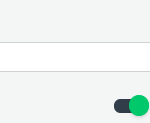Survey creators of all backgrounds use our email invitation collector.
Why? Because it's easy to set up and automate, and it's effective at collecting a whole lot of responses quickly.
But simply using it doesn't guarantee success. You'll need to consider the subtle nuances that can influence your emails' open and click-through rates. To that end, here are 3 tips to consider:
Ready to email your survey?
Use our email collector to start collecting responses today!
1. Carefully decide who appears as the sender
The email you choose to use for sending your survey invites is the first thing recipients see when they receive an email invitation from you. As you can imagine, whether or not they recognize the “from” email can play an essential role in a recipient’s decision to open the email or disregard it.
You may have noticed that the sender email address on your invitation is your SurveyMonkey account email address by default, however this may not always be the best email address to send the invitations from. Why? If you’re sending an official survey for your company, but you’re using your personal email address, your recipients may not be inclined to open up your invitation if they don’t know you personally.
The good news is that this setting can always be changed to another email address managed by you or your company—when you follow these steps. Whenever possible, you’ll want to stick with the email address that your recipients are used to receiving emails from.
So if your respondents are used to receiving newsletters or other communications from a particular email address, try to use the same email on the survey. This will ensure that recipients have opted-in to communication from you, and the message will hit their inbox. In the world of email correspondence, having a white listed address is key.
2. Treat the subject line like a survey introduction
Creating a perfect subject line is a delicate balance. You’ll want to keep things short and sweet but also provide enough information for the recipient to recognize what the email is about. There are two mistakes we sometimes see—the subject line being very nondescript (e.g., “2015 survey”) or including a prize (e.g., “Take our survey for a chance to win $50!”).
Think of the subject line as the first introduction for the survey; it has the ability to draw your respondent’s attention. Doing this with a prize offering, while eye-catching, can feel like a difficult move to pull off. Most recipients are trained to see “$” or “prize” and interpret those types of emails as spam. It may be more valuable to describe the prize you’re offering within the body of the email where it can have more context as a legitimate sweepstakes.
On the other hand, rather than saying, “Take this survey!” you may have more success including the topic of the survey or your company name. This helps respondents identify the survey as something they’re interested in. For example, if you work for a PTA group, you might say “The Jefferson School PTA wants to hear from you!” This way the subject looks familiar, and your recipient will be on their way to taking that survey.

3. Use reminder emails sparingly
One of the great features of using our email invitation collector is that it allows you to track response status so you can remind those who haven’t yet taken your survey. It can definitely help you gather additional replies to send a friendly reminder to your respondents. With that said, you’ll want to be wary of sending too many invitations.
It’s a good idea to limit the number of reminder emails to balance gentle nudges without flooding a recipient’s inbox. At best, you’ll want to provide recipients with enough time to respond to your initial survey invitation before sending the first reminder. If the survey is about to close, you can then send a reminder that it’s approaching the deadline for a response.
Just remember, the more emails you send to a recipient list, the more you may exhaust your recipients. We sometimes see higher rates of respondents marking invitations as spam if they’ve been bombarded with a large number of reminders—even if the survey isn’t content they wouldn’t have initially interpreted as spam.
With these handy dandy message writing tips, your next email invitation is sure to stand out and get the survey responses you need. Now get to it, survey lovers, and let those writing skills shine!




